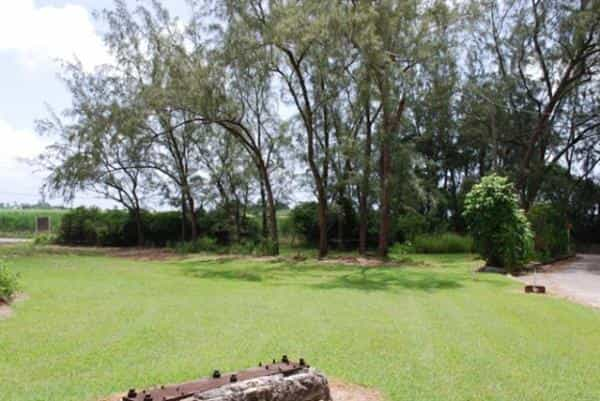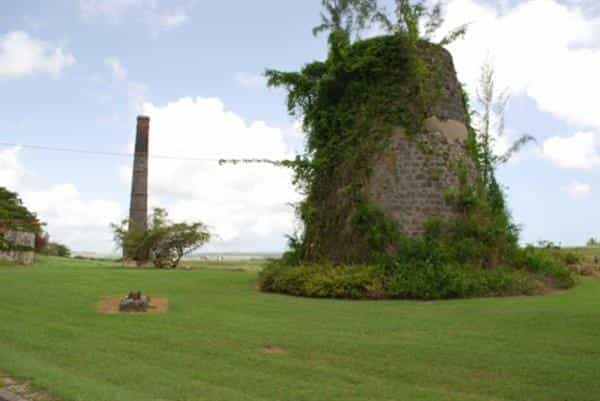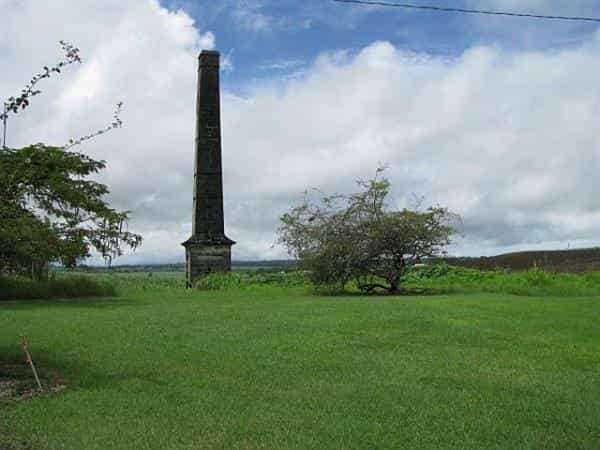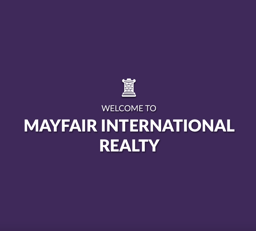Tierra for Køb i Tierra Parroquial, San Felipe
Anyone looking to purchase a property in Barbados with rich history should look no further than "Millwall", Moncrieffe in the parish of St. Philip. This property offers a unique oppertunity to build yourself a unique dream home and preserve a piece of Barbados history. The Moncrieffe Mill Property is located at an elevation of 560' at the SE corner of the St. John plateau, which overlooks the East coast of Barbados and which, further inland, rises to over 800' making it the second highest plateau in the island. The East to West trade wind of this latitude blows from the coast of Africa, across 2000 miles of Atlantic Ocean, until it makes its first landfall at the East coast of Barbados. When the trade winds reach Barbados, they are driven up by the elevated plateau and drop their rain on its slopes, making it one of the most verdant areas of the island. The adiabatic effect results in a slightly cooler and drier climate on top of the plateau. At the Moncrieffe Mill Property, a well-designed home, which allows for proper air flow, will not need air conditioning, a considerable saving in operating cost. In fact, some people who live in this area will use a light blanket when sleeping at night, during the winter months. HISTORY OF MONCRIEFFE PLANTATION AND THE MONCRIEFFE MILL PROPERTY In 1625, an English ship, the Olive Blossom, captained by John Powell stopped at Barbados. Finding the island uninhabited, he left a plaque claiming the island for the British Crown in the name of King James 1st. A monument commemorating Powell's plaque now stands at Holetown on the West coast of Barbados. Powell's action meant that Barbados was now the property of King James not the Courteen brothers, who were his employer. Upon his return to England, Captain Powell gave the Courteens a glowing report on Barbados and they set about organizing an expedition of settlers, who arrived in Barbados in February 1627. In July 1627, King James 1st, wishing to secure ownership of Barbados for the Crown, issued a letters patent to his friend James Hay, Earl of Carlisle, making him Lord Protector of Barbados. At the time Carlisle was heavily in debt to a syndicate of London merchants. In settlement of his debt, he granted the syndicate 10,000 acres of land in Barbados. The merchants immediately commenced recruiting settlers and a group of 64 arrived in Barbados in June 1628. It is most likely that amongst these was Humphrey Walrond (1600-1670) and his wife, because the birthplace of their son John, in 1629, is recorded as Barbados. Walrond was not a settler, but a land owner and his land grant was, most likely, the property now known as Moncrieffe plantation. In the 1640s, civil war broke out in England between the Cavaliers (Royalists) and the Roundheads (who supported Parliament). This came to a climax in 1649 with the execution of King Charles 1st. In Barbados, hostilities also broke out between land owners who supported the Royalist cause and those who opposed it. With Humphrey Walrond's leadership, the Royalists won the day and when the Monarchy was restored in England in 1660, he was Knighted and named Lieutenant-Governor of Barbados. The Walrond family continued to own Moncrieffe until Jane Walrond, daughter of Henry Walrond Jnr., married Thomas Warner of Antigua. When Thomas died in 1695, their son, Ashton Warner, who remained in Antigua, inherited the estate. Jane returned to Barbados and married Richard Lightfoot. They leased Moncrieffe from Ashton. Richard renamed the plantation Lightfoot. This name remained in use for many years, the Jeffrys/Mayo map of 1775 showed the name as Lightfoot. By the time Henry Tudor acquired the property in 1817, the name had reverted to Moncrieffe. THE BIG LAND-GRAB Acquisition of foreign territory by the European powers in the 16th and 17th century was driven by prestige and greed. However, little islands like Barbados were pursued, not by Monarchs, but by Noblemen and entrepreneurial merchants seeking to grow their wealth. This was an expensive and risky business. Having solicited and received a land grant from the Crown, the land owner would recruit settlers, secure and outfit a boat that would carry the settlers to their new land. The settlers, who were, in fact, indentured servants (aka white slaves), would be required to work without pay for a period of about twelve years, after which, they would become free, and be given a small plot of their own in the new land. Financial reward for the land owner came from growing valuable cash crops such as tobacco and cotton. The risks are illustrated by the experience of the Courteen brothers, who had sent the first group of settlers to Barbados in 1627. After the arrival of the second group, sent out by the syndicate of London merchants and by the Earl of Carlisle arrived one year later. Conflict, both jurisdictional and armed soon arose between the competing groups. The Courteen settlers were forced of their land and the large financial investment on the part of the Courteen brothers was lost. MONCRIEFFE AND SUGAR The soil and climate in Barbados was not well matched to the needs of tobacco or cotton and in the late 1630s, some land owners started growing small amounts of sugar cane. About this time, disputes arose between the Netherlands and Portugal forcing the exodus of some Dutch farmers from Brazil. A small number of these came to Barbados in 1642. They brought with them detailed knowledge about the cultivation of sugar cane and the technology for the design and construction of windmills to power the crushers that extracted juice from cane. The windmill at Moncrieffe was probably constructed in about 1645, making it over 370 years old. Because of the constant winds, it could produce about 45 horsepower, the equivalent of about 150 men. Plantation owners, who installed wind powered cane crushers, discovered that the increased productivity gave them the potential to process much larger volumes of sugar cane. Those with adequate capital started acquiring land on large scale. Within fifteen years, the average plantation size more than tripled, with the larger ones being about 200 acres. The cultivation of sugar cane proved to be extremely labour intensive. Plantation owners could not recruit enough indentured labour to meet their needs. Besides, the white skin of indentured labourers proved incapable of sustaining twelve hours of back-breaking work in blazing sun. The planters solved their labour problem by importing black slaves from Africa. In the ensuing years, huge numbers of black slaves were brought into Barbados. This manpower, coupled with the hundreds of windmills that had been built and the huge European demand for sugar, resulted in Barbados, by 1660, having a GDP higher than all the other English colonies in the Americas combined. By 1750, sugar surpassed grain as the most valuable commodity in European trade. The next big technology to reach Barbados was steam power, which began to be incorporated around 1890. Steam power brought increases in both productivity and efficiency to sugar manufacture and another big consolidation of plantation land occurred, resulting in some large plantations of 500 acres, or more. Around 1900, Moncrieffe converted to steam. The only remaining signs of steam power on The Moncrieffe Mill Property are the brick chimney and a 300' deep water well that was used to provide water for the steam boiler. THE CHIMNEY EFFECT All chimneys, but especially tall ones such as the chimney at The Moncrieffe Mill Property have a rather special physical property called the chimney effect. If an opening is made in the base of the chimney, air will be drawn into the opening from outside the chimney and expelled at the top of the chimney. This effect is due to the slightly higher atmospheric pressure at the bottom than at the top. No external power is required to create this draft. Power comes from the fact that the air cools as it travels up the inside of the chimney. By building a home which incorporates the chimney in an outer wall, a constant, gentle cooling flow of air can be drawn through the house, greatly reducing the need for air conditioning. BENEFITS OF A HOME BUILT ON THE MONCRIEFFE MILL PROPERTY A relatively cool and dry climate makes for very comfortable living. The combined architectural features of the windmill tower and chimney, not available at any other building site in Barbados, can be incorporated into a unique home that will be the envy of all. The chimney effect plus the consistent cooling breeze will make air conditioning unnecessary with a consequent and significant reduction in operating cost The low pollution levels delivered by the Atlantic breeze make for a healthy environment. By refurbishing and maintaining the windmill tower and chimney, the home owner will be preserving an important piece of Barbadian history. HISTORIC AND OTHER IMPORTANT SITES CLOSE TO THE MONCRIEFFE MILL PROPERTY St. Johns Church: One of the oldest (1645) and most historic churches in Barbados with a commanding view of the island's entire East coast. Codrington College: An Anglican seminary built in 1745 and set in beautiful grounds open to the public. Codrington School: A private co-ed school dating from 1917, it offers an International Baccalaureate (IB) The Lodge School: A publicly funded co-ed school built in 1743 Fine dining: At the Crane Resort and at Marco Polo restaurant Shopping: At the Emerald City mall, six cross-roads Swimming: At the world famous Crane Beach, a public beach adjacent to the Crane Resort. Contact our real estate sales team today to schedule a viewing of this one of a kind piece of Barbadian history. Interested in other properties for sale or rent in Barbados? Realtors Limited real estate portfolio features properties in many of Barbados' top West Coast developments such as Sandy Lane Estate, Royal Westmoreland, Port Ferdinand, St. Peters Bay and Port St. Charles. On the South Coast of the island The Condominiums at Palm Beach, Sapphire Beach, The Sands, Rockley Resort and Harmony Hall Green offer great investment potential. Our team specializes in Residential and Commercial real estate sales, so whether you are looking for Beachfront or Inland, Condominium or House / Villa, the Realtors Limited sales team is here to ensure you purchase the perfect slice of Caribbean paradise. Amenities: 5 Minutes To Six Roads Breezy Country Views Cul-De-Sac Established Neighbourhood Flat Lot Road Parking Short Drive To Beach Ref: 36130-moncrieffemill



